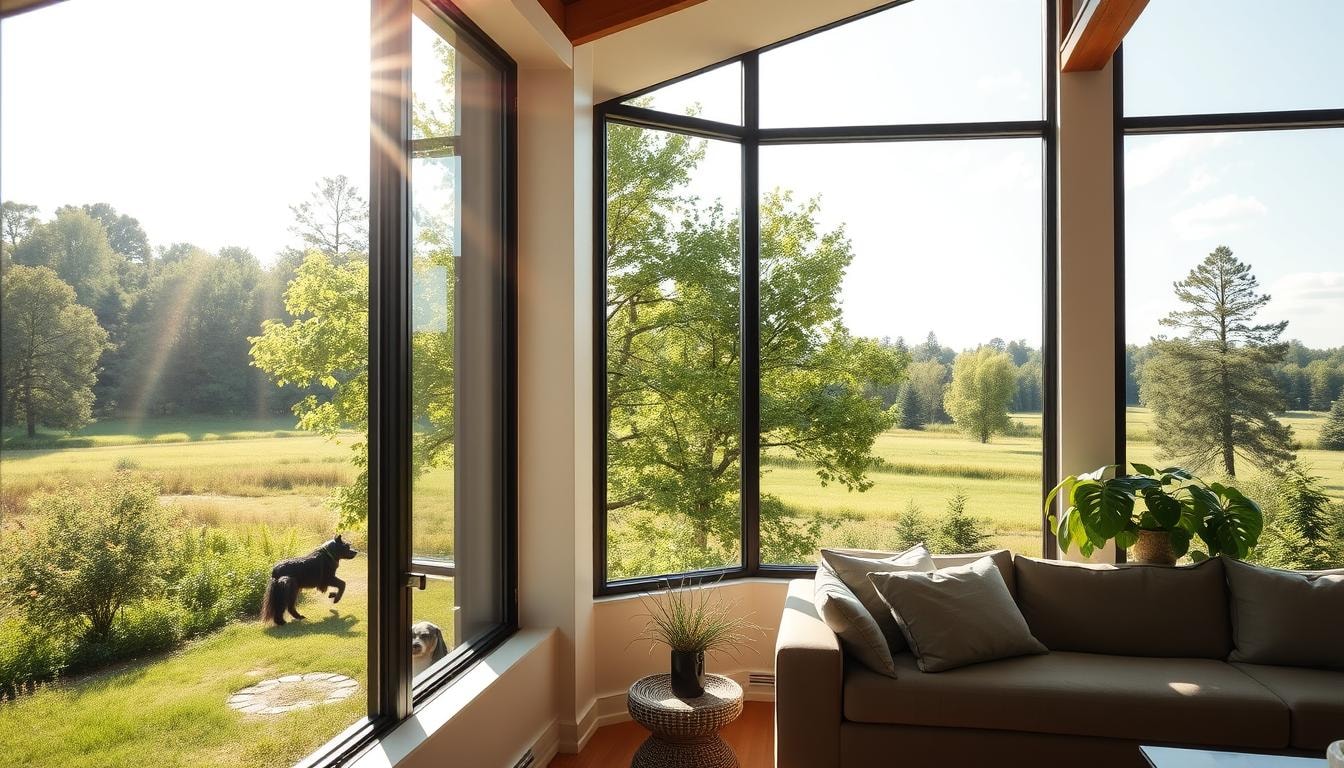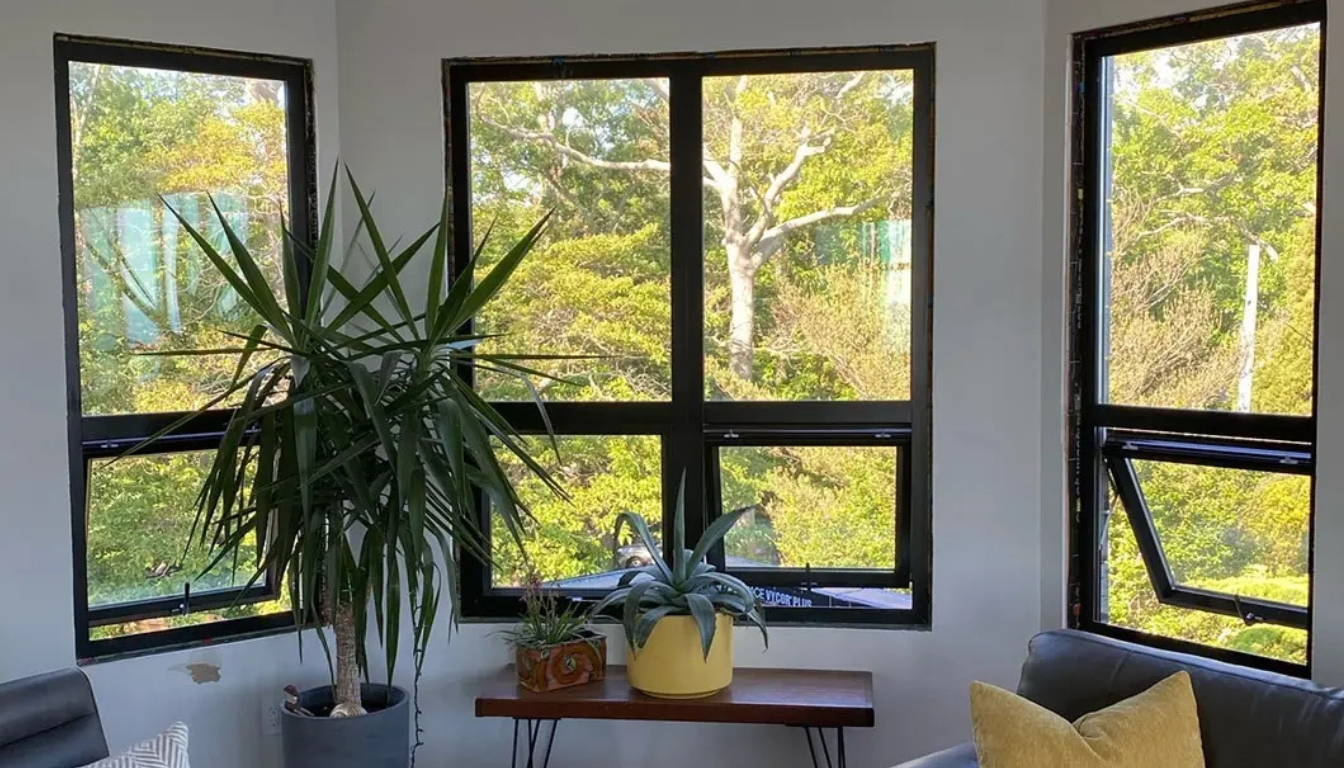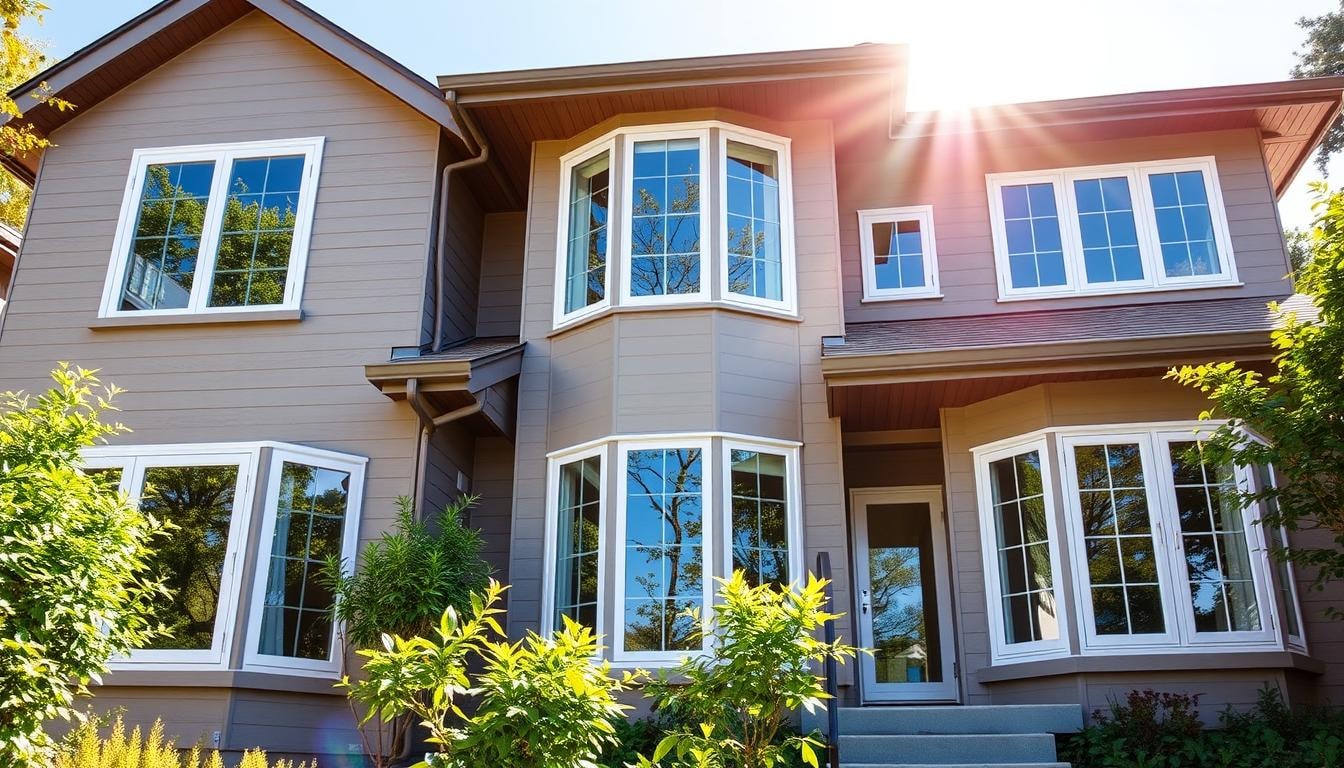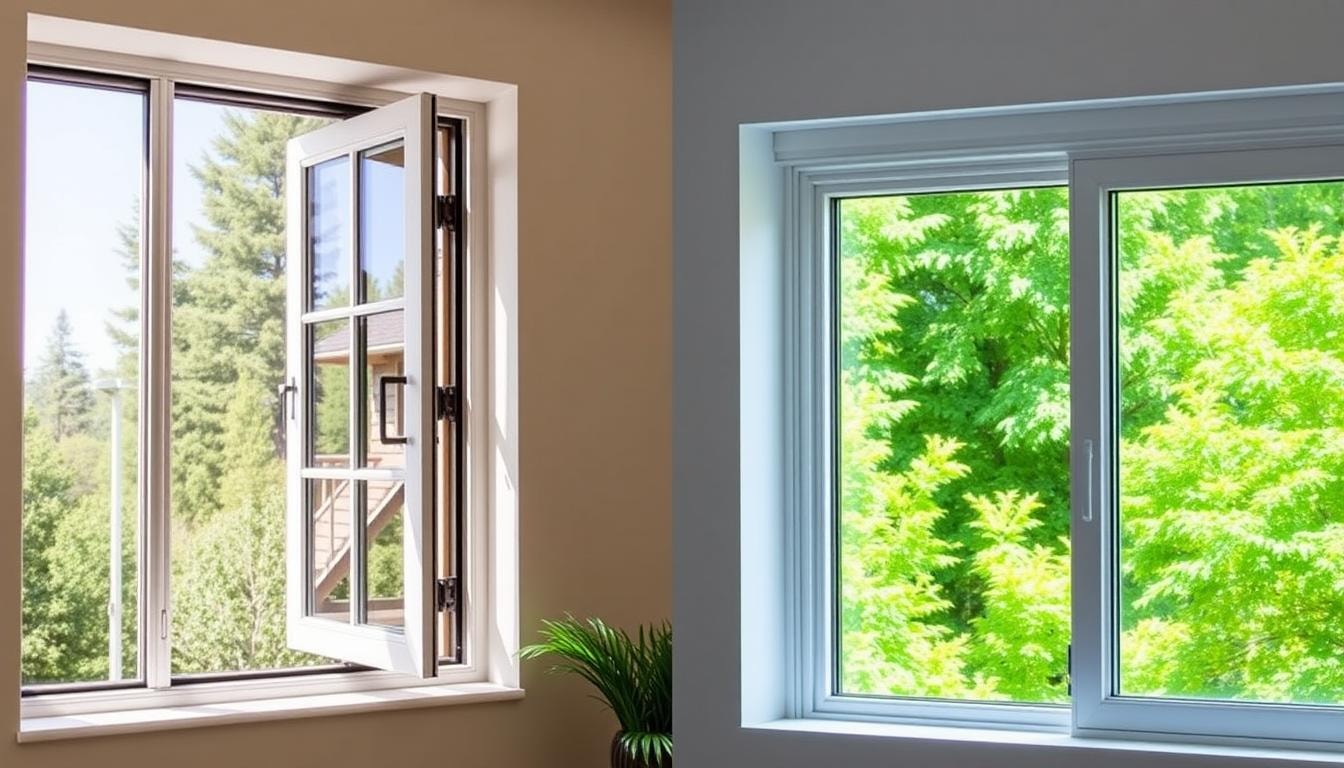
Casement vs Sliding Windows: Which to Choose
Choosing between casement and sliding windows can change how your home looks and works. Casement windows swing open like doors, letting in lots of air and giving a clear view outside. Sliding windows move sideways, making your home look modern and saving space.
Deciding between casement and sliding windows depends on several things. You need to think about how much air you want, how much energy you want to save, and how easy you want it to be to clean. Also, your home’s style matters a lot.
Key Takeaways
- Casement windows provide maximum air circulation, making them suitable for kitchens and bathrooms.
- Sliding windows are easier to open and close, especially in hard-to-reach areas.
- Casement windows offer a clear, unobstructed view of the outdoors.
- Sliding windows are more affordable and have a simpler design.
- Casement windows require regular maintenance to prevent warping and ensure smooth operation.
Understanding Window Basics and Terminology
Choosing the right windows for your home is important. Knowing about window operations, components, and materials is key. Let’s explore the basics of modern window design to help you choose wisely.
Types of Window Operations
There are many window styles, each with its own benefits. Here are a few:
- Casement windows (also known as crank windows) that swing outward on hinges
- Sliding windows that operate by gliding horizontally
- Double-hung windows with upper and lower sashes that move vertically
- Awning windows that tilt outward from the bottom
Key Components of Modern Windows
Modern windows have several key parts. The frame is the main support. The sashes hold the glass. New glass technologies, like double-pane, make windows more energy-efficient.
Window Frame Materials
Windows can be made from different materials. Options include wood, PVC, vinyl, fiberglass, and aluminum. Each material has its own strengths, like durability or looks, to match your needs.
Knowing about window basics is crucial when picking windows for your home. This knowledge helps you make a choice that fits your needs for energy, air flow, and looks.
Physical Differences Between Casement and Sliding Windows
Choosing between casement and sliding windows means knowing their differences. Casement windows swing out and open fully. Sliding windows move side to side and open half way.
These differences affect how well they let in air, how easy they are to clean, and how much space they need. Casement windows have a crank for opening and closing. Sliding windows use tracks.
- Casement windows are great for big rooms because they open wide. Sliding windows are better for small spaces because they don’t take up much room.
- Casement windows keep your home warmer or cooler because they seal well. Sliding windows might let air in, changing your home’s temperature.
- Sliding windows look modern and fit well in new homes. Casement windows have a classic look that suits older homes.
- Casement windows need more upkeep because of their moving parts. Hinges and hardware need oil to work right.
The differences between casement and sliding windows affect their air flow, energy use, and looks. It’s key to think about what you need and like when picking windows for your home.
Casement vs Sliding Windows: A Comprehensive Comparison
Choosing new windows for your home is a big decision. You must decide between casement and sliding windows. Each type has its own design, how it works, and how it’s installed. These factors affect your home’s look, how well it works, and its energy use.
Design Features
Casement windows give you a clear view and seal tightly. They look elegant and traditional. Sliding windows, however, have a sleek, modern look. They’re often chosen for modern homes.
Operation Mechanisms
Casement windows open with a crank or lever. This makes them easy to use with one hand. Sliding windows move side to side. They open and close smoothly.
Installation Requirements
Casement windows need room to open fully outside. Sliding windows require more space but don’t need extra room outside. Both can be put in tricky spots like above sinks or bathtubs.
Choosing between casement and sliding windows depends on what you want. It’s about your home’s needs, the look you want, and how easy it is to install.
Energy Efficiency Considerations
Casement windows are often better than sliding windows when it comes to saving energy. They are made to close tightly, which means less air leaks. This tight seal can help lower your heating and cooling costs.
Both types of windows can be made more energy-efficient. You can add double or triple glazing and low-E coatings. These features help keep your home warm in winter and cool in summer. Casement windows might have a slight advantage because they seal tighter.
It’s important to keep the seals and weatherstripping of both windows in good shape. This helps them stay energy-efficient for a long time. Proper installation and regular care are key to saving energy and keeping your bills low.
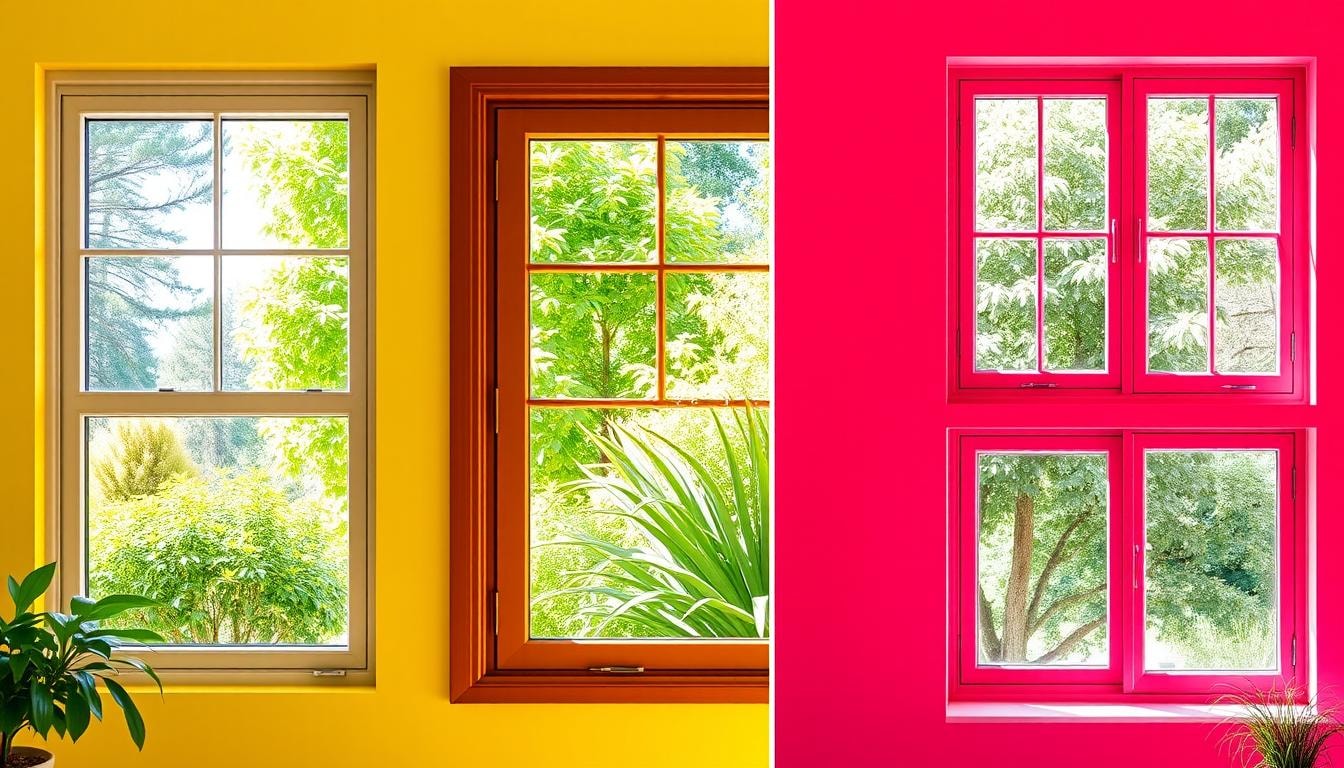
Ventilation and Airflow Capabilities
Casement and sliding windows have their own strengths when it comes to air flow. Casement windows open fully, letting in cool breezes and fresh air. They’re great for kitchens and bathrooms where you need lots of air.
Sliding windows open halfway, giving you more control over air flow. This is good for rooms where you want a soft breeze, not a strong gust. Both types of windows help with air flow all year round. They let in more air when it’s hot and less when it’s cold.
Maximum Air Flow Potential
Casement windows are top-notch for air flow. They open wide, bringing in lots of air. This makes them perfect for places that need lots of ventilation, like kitchens and bathrooms.
Seasonal Ventilation Benefits
Casement and sliding windows are both good for different seasons. Casement windows are great for summer breezes. Sliding windows let you control the air flow, so you can adjust it all year.
Maintenance and Durability Factors
Choosing between casement and sliding windows affects how you maintain them. Sliding windows are easier to keep up because they have fewer parts. Casement windows need regular oiling of their hinges and cranks for smooth opening.
Both types need regular cleaning to look good and work well. But, their durability depends on the material and how well they’re made.
- Casement windows might wear out faster on their hinges and seals. This can shorten their life.
- Sliding windows can have problems with their tracks and rollers. This makes them harder to use and needs more upkeep.
Regular checks and upkeep can make both casement and sliding windows last longer. This includes oiling parts, tightening screws, and fixing seals or weatherstripping.
Choosing between casement and sliding windows depends on what you like, your home’s needs, and how much upkeep you’re ready for. Knowing about maintenance and durability helps you pick the right one for your home and life.
Cost Analysis and Value Comparison
Choosing between casement and sliding windows involves looking at the initial cost and long-term savings. Sliding windows are often cheaper upfront. But, casement windows can save more on energy bills over time.
Initial Investment
Sliding windows are usually more affordable at first. They are simpler to design and install. Casement windows, with their complex mechanisms, cost more to start with.
Long-term Value Benefits
Casement windows might cost more at first, but they save money in the long run. They are very energy-efficient, which can cut down on energy bills. This makes the extra cost worth it.
Installation Costs
Installation costs vary for both types of windows. Sliding windows are generally cheaper to install. Casement windows need more work, so they cost more to put in.
When deciding, think about both the initial cost and long-term savings. Casement windows might cost more to start, but they save on energy bills. Choose based on your needs, budget, and goals.
Ideal Locations and Applications
Choosing between casement and sliding windows depends on the location and use. Casement windows fit well in narrow spots and areas needing lots of air, like kitchens and bathrooms. They also work in places with enough room outside.
Sliding windows are better for wider spaces and tight areas where casement windows won’t fit. They’re great for places with little room outside.
In living rooms, casement windows can make the space feel bigger. Sliding windows are better for tight spaces where opening windows outward is hard. Sliding windows also connect indoor and outdoor areas well, giving clear views.
When picking windows, think about the room’s purpose, space, and air flow. Casement windows are best for kitchens and bathrooms for air. Sliding windows are good for bedrooms and living rooms with narrow window openings.
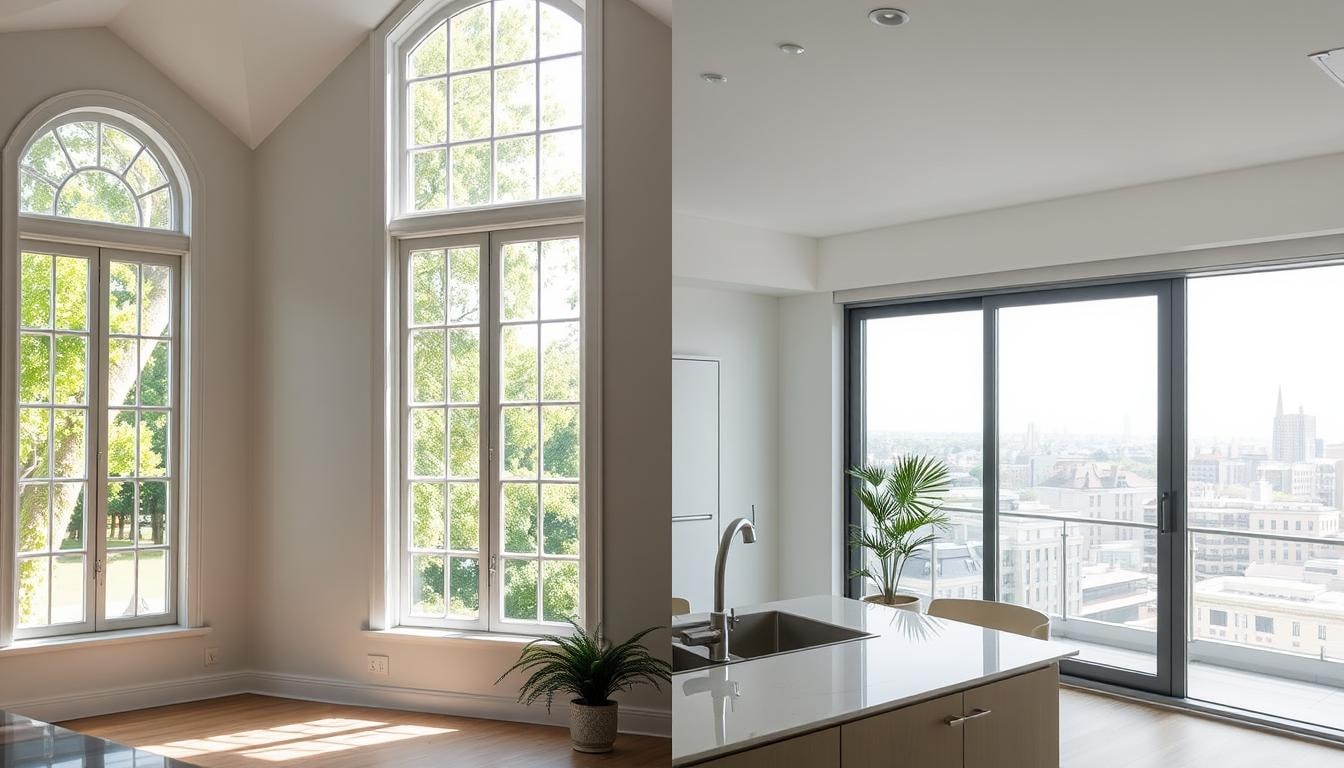
The right choice between casement and sliding windows depends on your home’s design and layout. Knowing each type’s strengths and weaknesses helps you choose. This choice improves your home’s function, energy use, and looks.
Security and Safety Features
Choosing the right windows is crucial. Both casement and sliding windows have features to keep your home safe.
Locking Mechanisms
Casement windows have multi-point locks for better security. These locks make it hard for intruders to get in. Sliding windows also have locks, from simple sash locks to advanced security options.
Emergency Exit Considerations
In emergencies, casement windows can be a safe exit. They open wide, making it easy to get out. Sliding windows can also be a quick escape, with their horizontal opening.
Both types of windows can have extra safety features. These include laminated glass or security films. They help protect against break-ins and other dangers.
Choosing between casement and sliding windows depends on your home’s needs. Make sure your windows keep you and your family safe.
Aesthetic Appeal and Design Options
Choosing windows for your home is important. The look and design options can make your home more beautiful. Both casement and sliding windows have their own benefits.
Casement windows have a traditional style. They fit well with classic homes. When open, they offer great views, making your home feel more connected to nature.
Decorative grilles and hardware can make casement windows even more elegant. This adds a timeless beauty to your home’s exterior.
Sliding windows, however, have a modern and sleek look. They are perfect for contemporary homes. Their design gives a wide view, making your home feel bigger.
Sliding windows fit well with modern designs. They help create a beautiful and cohesive look for your home.
Both casement and sliding windows come in many materials, colors, and finishes. This means you can choose the perfect windows for your home. Whether you like the classic look of casement windows or the modern style of sliding windows, there’s something for everyone.
Weather Performance and Durability
Casement and sliding windows each have their own strengths. Casement windows seal tightly, great for windy areas. They use a special seal to keep air out, saving energy.
Sliding windows have a flexible seal that keeps water out. They’re good for rainy and stormy weather. Even though their seal isn’t as tight, they stay weather-resistant for a long time.
It’s key to install and maintain windows well for best performance. Both types can handle many weather conditions if done right.
Think about your area’s weather when choosing windows. Casement windows are best for windy places. Sliding windows work well in rainy areas with milder weather.
Get the Best Windows for Your Home with Budget Windows
At Budget Windows, we offer a wide range of window options to suit every home and budget. Whether you’re looking for casement or sliding windows, our experts will help you choose the best windows for maximum ventilation, energy efficiency, and aesthetic appeal. Contact us today to discuss your window needs and get the perfect replacement window for your home.
Conclusion
Choosing between casement and sliding windows depends on many things. These include your ventilation needs, energy goals, and how you like to maintain your home. Casement windows are great for letting in air and saving energy. They’re perfect for kitchens and bathrooms.
Sliding windows are better for small spaces. They look modern and can make your home look better.
Casement windows are more energy-efficient because they seal well. This can save you money on bills over time. They are also more secure because of their design and locks.
Deciding between casement and sliding windows should be a careful choice. It depends on your home’s needs and what you like. Talking to a window expert can help you choose the right one for your home.
Whether you want to save energy, improve air flow, or enhance your home’s look, there’s a window for you. The right choice can make your home more functional and beautiful.
FAQs
What are the key differences between casement windows and sliding windows?
Unlike casement windows, which open outward and offer excellent ventilation, sliding windows tend to open side-to-side and provide less ventilation.
How does window ventilation differ in casement and sliding windows?
Casement windows tend to allow more ventilation because they open fully, offering maximum airflow. In contrast, sliding windows offer less ventilation as only half of the sash opens.
Which window type is better for energy efficiency?
Casement windows seal tightly, helping to save energy by reducing air leaks. Sliding windows may let in more air, reducing their energy efficiency unless installed correctly.
What are the sliding windows pros for small spaces?
Sliding windows are ideal for small areas with limited exterior space. They don’t require space to open outward, making them a low-maintenance, space-saving window option.
Are sliding windows or casement windows better for natural light?
Both window options allow for natural light, but casement windows provide a clearer, unobstructed view when fully open, while sliding windows offer wide, but potentially limited, openings.





